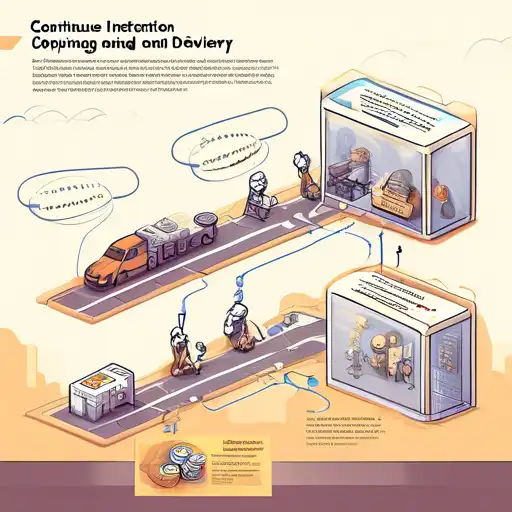What is Continuous Integration and Delivery?
Continuous Integration (CI) and Continuous Delivery (CD) are pivotal practices in modern software development, aimed at improving the speed and quality of software releases. CI/CD automates the integration of code changes from multiple contributors into a single software project, ensuring that the software can be reliably released at any time.
The Benefits of CI/CD
Implementing CI/CD brings numerous benefits to development teams, including:
- Reduced integration problems
- Faster release rates
- Higher quality software
- Improved developer productivity
By automating the build, test, and deployment processes, teams can focus more on development and less on the logistics of software release.
How CI/CD Works
CI/CD pipelines are the backbone of these practices. A typical pipeline includes:
- Code commit to a shared repository
- Automated build and test processes
- Deployment to a staging environment
- Final deployment to production
This streamlined process ensures that every change is tested and ready for release, minimizing the risk of errors in production.
Best Practices for CI/CD
To maximize the effectiveness of CI/CD, consider the following best practices:
- Maintain a single source repository
- Automate the build process
- Make the build self-testing
- Keep the build fast
- Test in a clone of the production environment
Adhering to these practices can significantly enhance the efficiency and reliability of your software development lifecycle.
Challenges in Implementing CI/CD
While CI/CD offers many advantages, teams may face challenges such as:
- Initial setup complexity
- Cultural resistance to change
- Integration with legacy systems
Overcoming these challenges requires a commitment to continuous improvement and a willingness to adapt to new methodologies.
Conclusion
Continuous Integration and Delivery are essential practices for teams aiming to deliver high-quality software rapidly and reliably. By understanding and implementing CI/CD, organizations can stay competitive in the fast-paced world of software development. For more insights into optimizing your development processes, explore our guide on DevOps tools.
